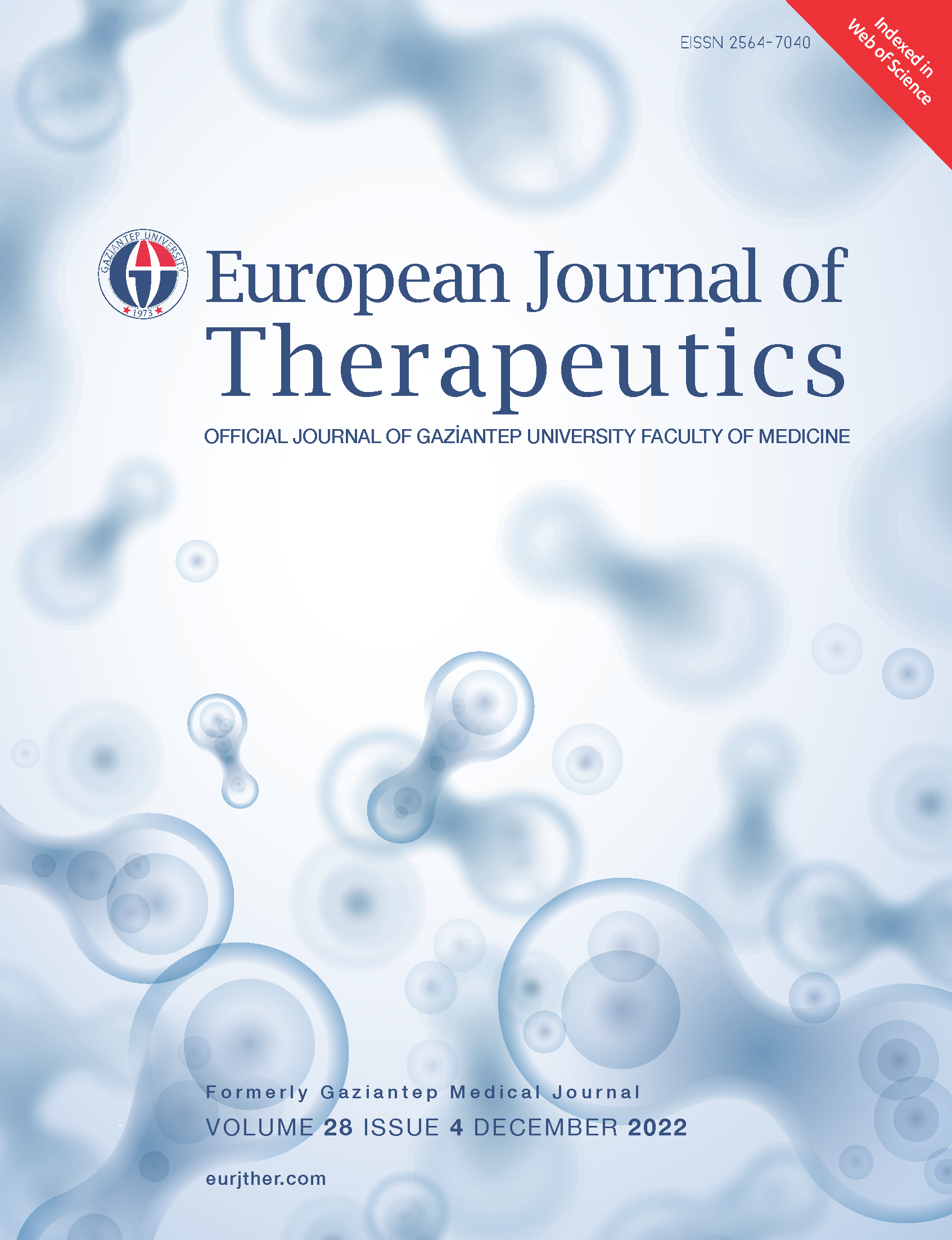Food Insulin Index: Implications for Type 2 Diabetes Mellitus
DOI:
https://doi.org/10.58600/eurjther-28-4-0111Abstract
The education of diabetic patients about their disease is an integral part of prevention, treatment and care (1). Realistic perceptions about nutrition are important for the control and prevention of complications (2). This letter questions the usefulness of the food insulin index (FII) concept for the management of type 2 diabetes mellitus (T2DM) with overweight. FII has been proposed to quantify postprandial insulin response to a food in comparison with an isoenergetic portion of a reference food such as white bread or glucose (3, 4).
Metrics
References
Karakurt P, Hacıhasanoğlu Aşılar R, Yıldırım A, Sevinç H. Knowledge levels and attitudes of diabetic patients about their disease. Eur J Ther 2017; 23: 165-72.
Duymaz T. Effects of nutrition and exercise habits in patients with Type 2 diabetes. Eur J Ther 2018; 24(4): 220-3.
Teymoori F, Farhadnejad H, Mirmiran P, Nazarzadeh M, Azizi F. The association between dietary glycemic and insulin indices with incidence of cardiovascular disease: Tehran lipid and glucose study. BMC Public Health 2020; 20: 1496.
Nimptsch K, Brand-Miller JC, Franz M, Sampson L, Willett WC, Giovannucci E. Dietary insulin index and insulin load in relation to biomarkers of glycemic control, plasma lipids, and inflammation markers. Am J Clin Nutr 2011; 94: 182-90.
Bao J, de Jong V, Atkinson F, Petocz P, Brand-Miller JC. Food insulin index: physiologic basis for predicting insulin demand evoked by composite meals. Am J Clin Nutr 2009;90:986-92.
Joslowski G, Goletzke J, Cheng G, Günther AL, Bao J, Brand-Miller JC, Buyken AE. Prospective associations of dietary insulin demand, glycemic index, and glycemic load during puberty with body composition in young adulthood. Int J Obes (Lond) 2012; 36: 1463-71.
Mirmiran P, Esfandiari S, Bahadoran Z, Tohidi M, Azizi F. Dietary insulin load and insulin index are associated with the risk of insulin resistance: a prospective approach in Tehran lipid and glucose study. J Diabetes Metab Disord 2015; 15:23.
Anjom-Shoae J, Keshteli AH, Sadeghi O, Pouraram H, Afshar H, Esmaillzadeh A, Adibi P. Association between dietary insulin index and load with obesity in adults. Eur J Nutr 2020;59: 1563-75.
Ghorbaninejad P, Imani H, Sheikhhossein F, Tijani Jibril A, Mohammadpour S, Shab-Bidar S. Higher dietary insulin load and index are not associated with the risk of metabolic syndrome and obesity in Iranian adults. Int J Clin Pract 2021;75: e14229.
Mozaffari H, Namazi N, Larijani B, Surkan PJ, Azadbakht L. Associations between dietary insulin load with cardiovascular risk factors and inflammatory parameters in elderly men: a cross-sectional study. Br J Nutr 2019; 121: 773-81.
Bell KJ, Gray R, Munns D, Petocz P, Howard G, Colagiuri S, Brand-Miller JC. Estimating insulin demand for protein-containing foods using the food insulin index. Eur J Clin Nutr 2014; 68: 1055-59.
Ostman EM, Liljeberg Elmstahl HGM, Bjorck IME. Inconsistency between glycemic and insulinemic responses to regular and fermented milk products. Am J Clin Nutr 2001; 74:96-100.
Brand-Miller J, Holt SH, de Jong V, Petocz P. Cocoa powder increases postprandial insulinemia in lean young adults. J Nutr 2003; 133: 3149-52.
Dugan CE, Fernandez ML. Effects of dairy on metabolic syndrome parameters: a review. Yale J Biol Med 2014; 87: 135-47.
Leary M, Tanaka H. Role of fluid milk in attenuating postprandial hyperglycemia and hypertriglyceridemia. Nutrients 2020; 12: 3806.
Jargin SV. Management of type 2 diabetes mellitus with overweight: Focus on SGLT-2 inhibitors and GLP-1 receptoragonists. Eur J Ther 2019; 25: 93-96.
Downloads
Published
How to Cite
Issue
Section
License

This work is licensed under a Creative Commons Attribution-NonCommercial 4.0 International License.
The content of this journal is licensed under a Creative Commons Attribution-NonCommercial 4.0 International License.


















